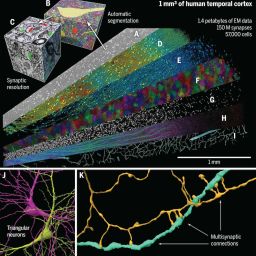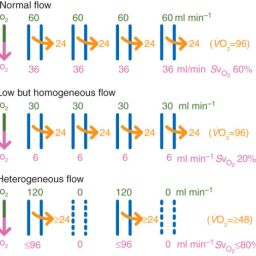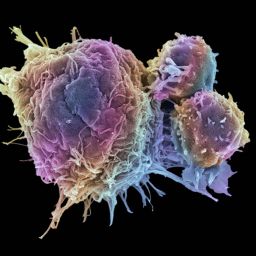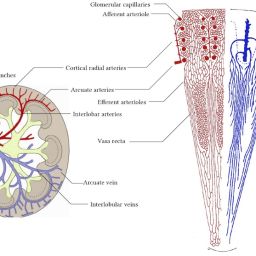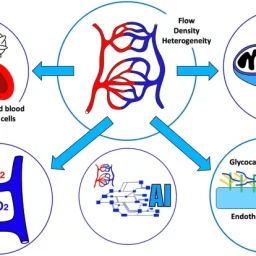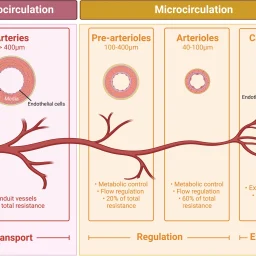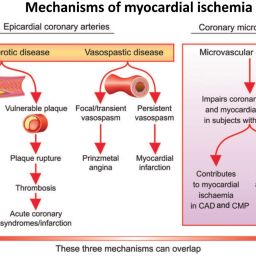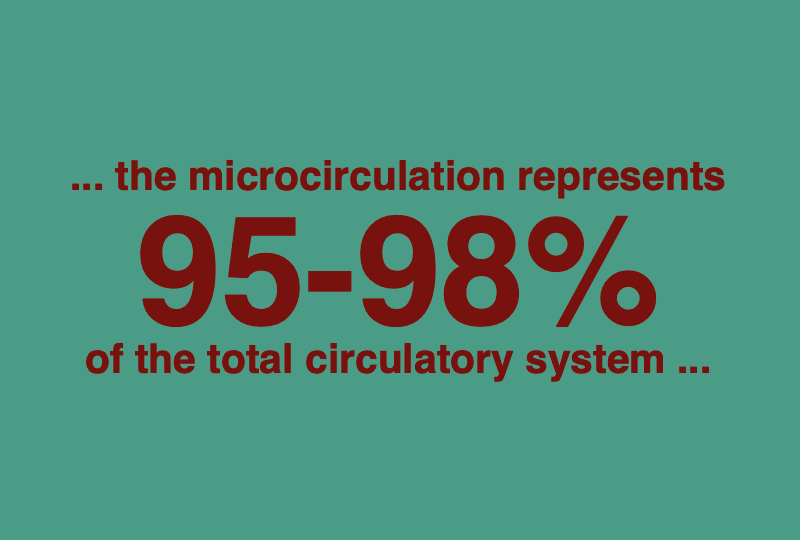
… the microcirculation represents 95-98% of the total circulatory system …

Microvascular Dysfunction and Hyperglycemia: A Vicious Cycle With Widespread Consequences
Houben, A.J.H.M. and C.D.A. Stehouwer (2021).
Endocrine and Metabolic Science 2: 100073 – PMID: 30135134 – DOI: 10.2337/dbi17-0044
“By approximation, the microcirculation represents 95-98% of the total circulatory system, underlining its importance in vascular physiology. “
“The microcirculation: definition and function
The microcirculation can be defined, based on anatomy, as blood vessels with a diameter of less than circa 150 μm, including arterioles, capillaries, and venules. Alternatively, the definition can be based on vessel physiology, and include also larger arterioles that respond to increased pressure by a myogenic reduction in diameter (Levy et al., 2001). By approximation, the microcirculation represents 95-98% of the total circulatory system, underlining its importance in vascular physiology. The three types of vessels have different functions. Arterioles are important for blood flow regulation and distribution, as well as pressure regulation. The exchange of oxygen and nutrients and waste products within tissues takes place in the capillaries. Venules play a role in hydrostatic (capillary) pressure regulation and in tissue repair and defense, as this is the preferential site in the circulation for adhesion and extravasation of circulating stem cells and immune cells(Aird, 2007a). The main function of the microcirculation is to deliver on demand oxygen, nutrients, and metabolites to tissues (Johnson et al., 2008). In addition, the microcirculation is important in reducing systemic blood pressure to low levels in the capillary in order to balance with oncotic pressure (Levy et al., 2001). A central mechanism that efficiently accommodates these functions is vasomotion. Vasomotion is defined as rhythmic changes in (arteriolar) diameter, and results from integration of local tissue (e.g. CO2, adenosine), circulating (e.g. hormones, cytokines), and neurogenic signals. Normal microvascular function (MVF) can be defined as optimal performance of the arterioles, capillaries, and venules to accommodate their respective functions. Microvascular dysfunction (MVD) can be defined as any suboptimal performance of one of the components, leading to a compromised nutrient delivery and/or vascular integrity. Notably, MVD comprises endothelial dysfunction, as the endothelium is a key player in the regulation of perfusion and exchange with tissues.”

Core source: https://pubmed.ncbi.nlm.nih.gov/30135134/
Extended article: https://www.sciencedirect.com/science/article/pii/S2666396120300273
